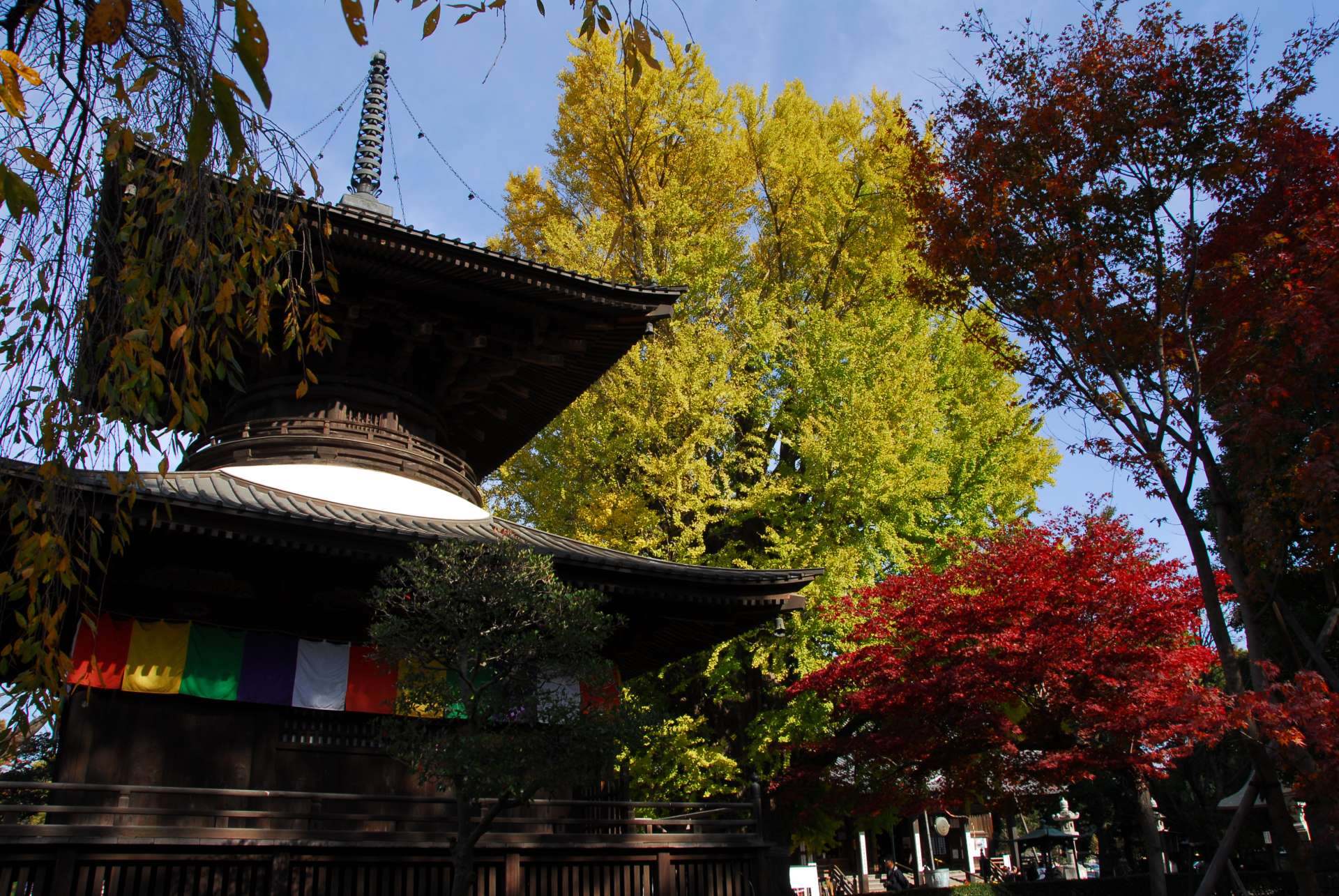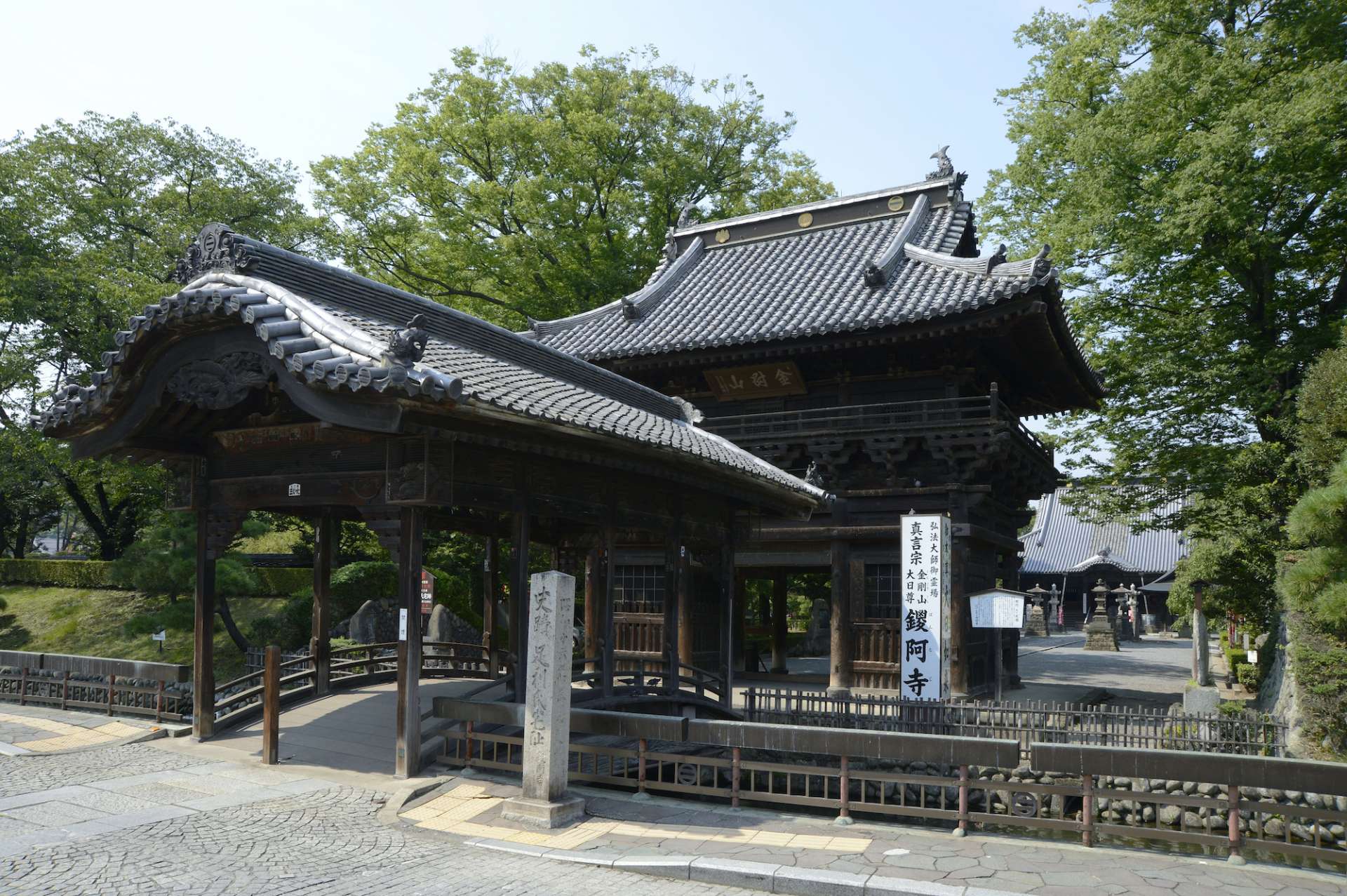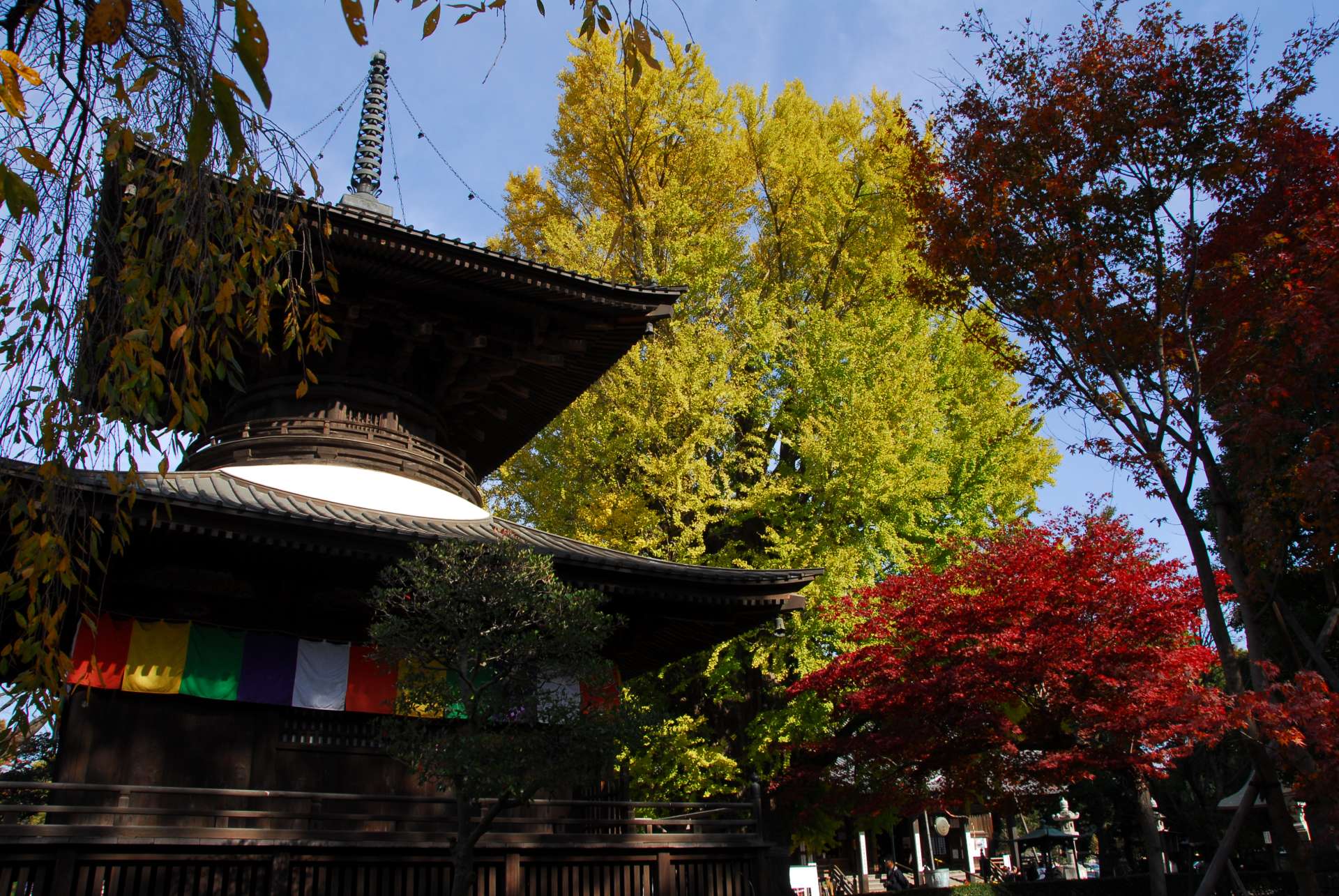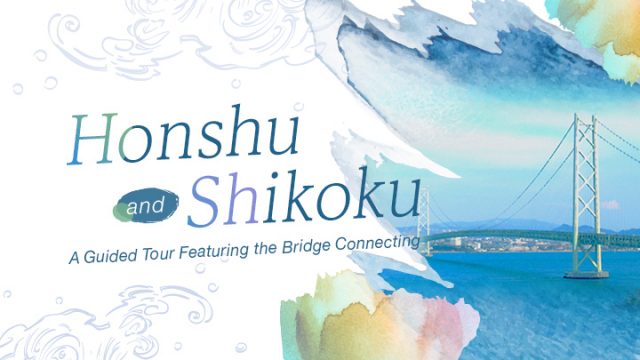鑁ㄓㄨㄥ阿寺已經有800多年歷史,主要祭拜的是大日如來佛,原來是作為足利家族的宅邸,現在已經被指定為國家歷史古蹟

Verified [Verified] denotes information that has been published with confirmation of its owing parties.
Banna-ji Temple
Enjoy the Sights of an Ancient Temple and an Invaluable Building that has been Designated a National Treasure
Banna-ji Temple is considered to have originated in 1196 CE, when it was constructed at the residence of Ashikaga Yoshikane as a personal Buddhist temple with the Vairocana Buddha enshrined. Yoshikane's child, Ashikaga Yoshiuji, would later add temple buildings and make it the family temple of the Ashikaga clan. Seven generations after Yoshikane, Ashikaga Takauji would go on to found the Muromachi Shogunate.
As it was originally the residence of the Ashikaga clan, the building's appearance is characterized by elements found in late Heian period samurai residences. Its grounds cover approximately 40,000 square meters, and are almost perfectly square. The gates found on each side, as well as the moat and embankments that surround the premises remain intact. The site was designated a national historical landmark in 1922, and was selected as one of Japan's Top 100 Castles because the temple also functions as a fortress.

The main temple building, constructed in the Zenshūyo style of Chinese architecture, is designated as a National Treasure. There are many other unique buildings that can be perused, such as the bell tower, which is designated as an Important Cultural Property, and the complete scripture library. The Tahoto Pagoda, designated a prefectural important cultural property, is a uniquely shaped building with a square base floor, and a circular upper floor. The arched bridge is the prefecture's sole roofed bridge. Its detailed engravings are a sight to behold.

The beautiful scenery that changes seasonally is another highlight. Many cherry trees are found throughout the premises, with nighttime illumination taking place during full bloom (precise dates are determined by blooming conditions.) The highlight of the fall season is the enormous ginkgo tree located in front of the main temple building. This 650-year-old tree has a circumference of ten meters and a height of thirty meters. Many temple visitors come around the end of November to see this symbol of the temple at peak color with its myriad of golden leaves on full display.

Yet another attraction found on the temple grounds are the Shumai dumplings that can be enjoyed at Dainichi-Chaya. Enjoy the charm of dining on this simple and comforting local cuisine after time spent reflecting on the timeless history found here.

Photos
-
![The arched bridge that spans the moat at the front entrance. The Romon (Sanmon) temple gate can be seen in the background.]()
The arched bridge that spans the moat at the front entrance. The Romon (Sanmon) temple gate can be seen in the background.
-
![Built during the Kamakura period (1185-1333 CE), the main temple building was designated a National Treasure in 2013.]()
Built during the Kamakura period (1185-1333 CE), the main temple building was designated a National Treasure in 2013.
-
![The temple's ginkgo tree seen beyond the Tahoto Pagoda. The contrast with the red leaves of the surrounding trees is quite beautiful.]()
The temple's ginkgo tree seen beyond the Tahoto Pagoda. The contrast with the red leaves of the surrounding trees is quite beautiful.
-
![The famous "Ashikaga Shumai", which are covered in sauce and enjoyed.]()
The famous "Ashikaga Shumai", which are covered in sauce and enjoyed.
Reviews
-
蘇文嘉
Details
- Address
- 2220 Ietomicho, Ashikaga City, Tochigi
- Telephone number
- 0284-41-2627
- Admission
- Free
- Access
- About a 10 minute walk from Ashikaga Station on the JR Ryomo Line or about a 10 minute walk from Ashikagashi Station on the Tobu Isesaki Line.
- Official website
- Official website(Japanese)






















